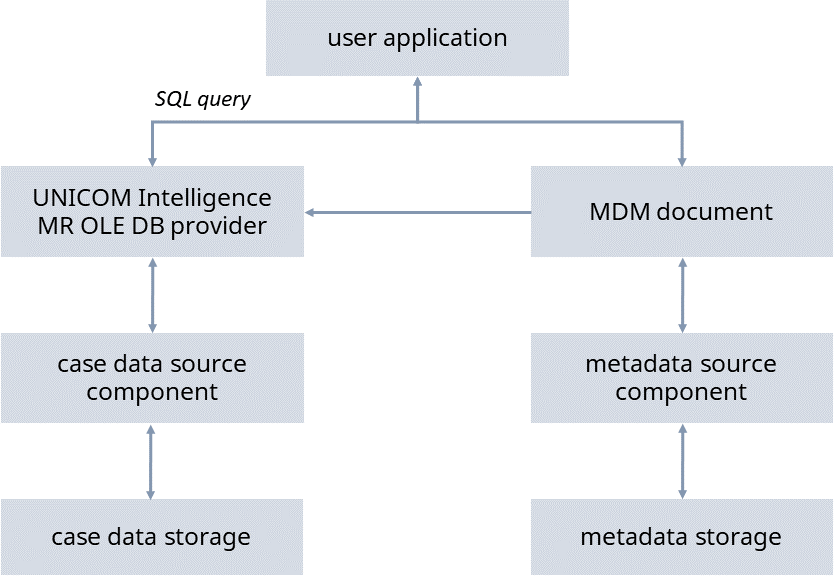UNICOM Intelligence Data Model architecture
The UNICOM Intelligence Data Model handles the following types of data in different ways:
Case data
Corresponds to the actual data gathered in the course of a survey.
Metadata
Describes the case data. For data collected using one of the UNICOM Intelligence products, the metadata also defines the questionnaire that is used to collect the case data. Metadata consists of information such as question texts, variable names and descriptions, translations of the various texts, and the definition of the structure of the case data.
When you access the data, the UNICOM Intelligence Data Model reconstructs the case data and metadata into a form that any standard data-querying application can use. In this way, you can more easily specify a subset of the data (for example, the data gathered using one version of a questionnaire) without using complex filtering. You can access metadata independently and edit it without changing the case data.
The following diagram shows the architecture of the UNICOM Intelligence Data Model.
The architecture of the UNICOM Intelligence Data Model is based on the following items:
UNICOM Intelligence OLE DB Provider (Provider)
This has a twofold role. It presents the case data in a standardized form that is accessible to any industry-standard data consumer, such as Microsoft Excel, and it enables you to write data to any well-defined data file or database schema.
Metadata Model (MDM) document
This is effectively an interface between the user application and the metadata. The MDM document simplifies access to the metadata by representing it as an object model, rather than as a serial file.
Case data source components (CDSCs)
These are interfaces between the Provider and the case data store. Each CDSC is specific to a particular type of case data storage and contains a description of how the case data is structured and any rules for accessing that data.
Metadata source components (MDSCs)
These are interfaces between the MDM document and the metadata store. Each MDSC is specific to a particular type of metadata storage. However, an MDSC is not required when the metadata is stored in a metadata document (.mdd) file.
See also

